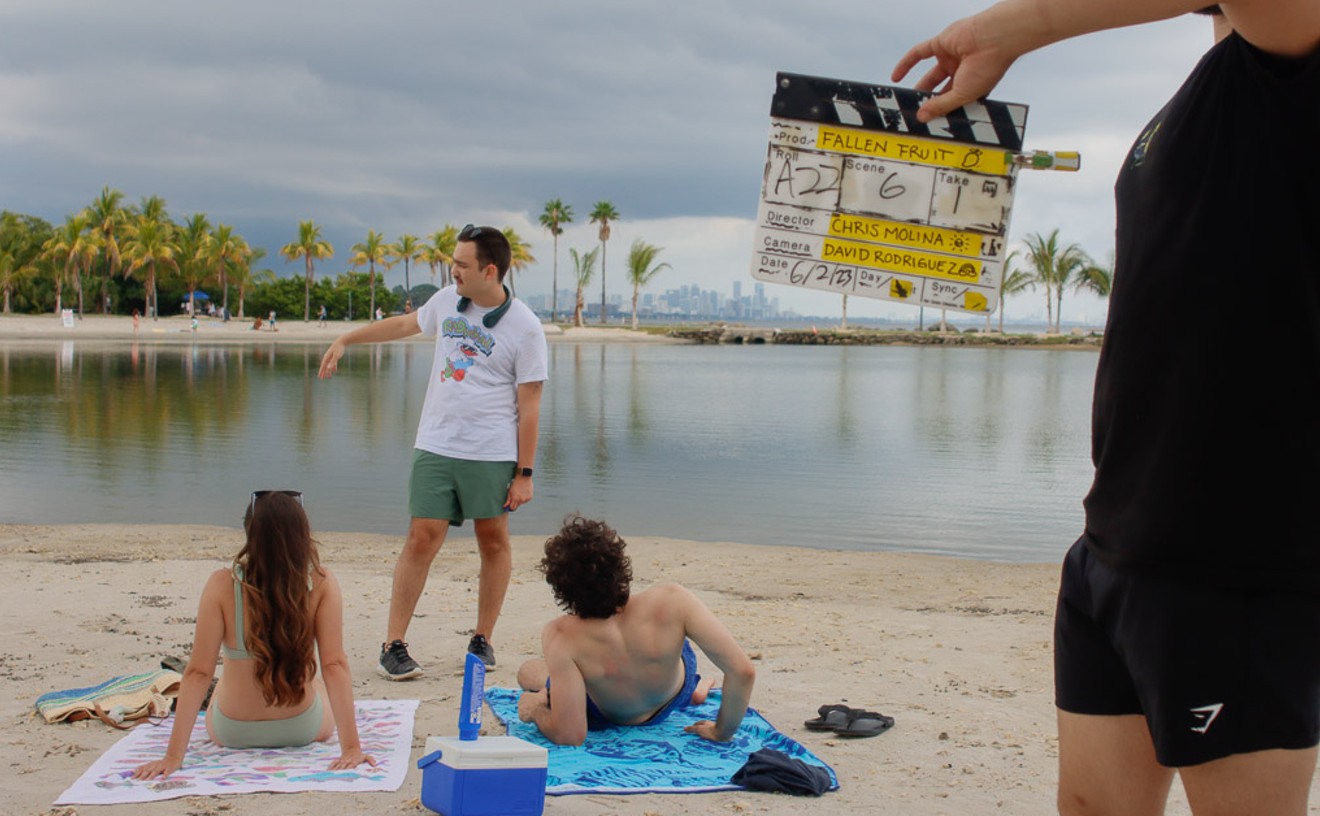Forget modern and contemporary art's aura of inaccessibility -- there is good and relatively unknown art out there waiting to be collected. With disparate agendas among our big private collectors, there is no uniform line on who and what to buy. If you are a potential buyer, now is the time.
Many of our talented fulfill the proverb that "nobody is a prophet in his own land." They exhibit, but they don't sell as much. Even at low prices most people don't take the risk. In Miami many go to openings only to drink and socialize. My advice: Hurry, the public's apathy and collectors' myopia is to your benefit. They go with the fad or wait for that resilient and proud artist to be validated by others.
Perhaps Bernice Steinbaum -- an experienced dealer and gallerist -- heard such distress for her latest show, "Affordable Art: Save Your Pennies," at her self-titled gallery. Summer is the perfect time for group shows at lower prices and this is one example. It contains a variety of styles, keeping with Steinbaum's unflinching criteria of intensive labor and quality of craft -- beginning with Kate Moran and Pablo Cano, who share a love for montage, art history, and the mechanical. Their works move from innocence to a kind of perfunctory irony. Moran's ingenious 17 manos is a group of ceramic automatons plus a moving doll on a wall. They move arms and legs in midair while warning the audience every now and then: "I'm not just another pretty face."
Cano, a master at combining the most disparate stuff into handsome assemblages, shows a queen doll made out of a guitar body, a painted can, and engraved chair legs with paws -- a detail that blends guiltless perversity with a Pop feel.
The works of Amelia Mesa-Bains and Carmen Lomas Garza are studies in contrasts. They both address similar geographies, but in different circumstances. In Spiritual Landscapes Mesa-Bains examines our wicked colonial history amid tranquil natural settings. Lomas Garza touches a valid theme, though quite rare, with Cumpleaños de Lala y Tudi, which shows a bucolic moment in a big family gathering.
Roger Shimomura's prints and Mark Koven's photos explore the theme of otherness. Shimomura revisits the relocation of Japanese-Americans in concentration camps during WWII. We contemplate these peacefully trivial domestic flashes with mom and child -- occurring within the oppressive sight of barbed wire. On the other hand, Koven's Miscommune shows a group of diverse images. He employs 3-D to feign a delicate movement within these seemingly familiar faces. Koven then intersperses three pieces containing sentence fragments -- in roman italic -- which refer to what is already shown. I felt the group clearly conveyed the idea of the title without the need of these declarations.
This happens, only much more obviously, in Pepón Osorio's My First Shoes, where you see inside a glass box exactly what Osorio describes: a pair of baby shoes hung with a rosary from a rearview mirror, reflecting Osorio's eyes (he's not kidding you). But his description kills the piece. Why all this need to inform and educate when art is essentially nonverbal?
Mixing written language with images is, more than a clear concern, a didactic obsession in contemporary art. Joseph Kosuth, a master conceptualist, admitted in a 1970s interview: "Words in art become art because as words they're not art at all," an anti-definition that should bring this superfluous practice to an end. But don't count on it; the habit is just too ingrained. Perhaps this helps rationalize why I'm not interested in Ken Aptekar's appropriations of old masters with endless litanies written over them, also featured in the show.
Elizabeth Cerejido's Faces shows a single row of closeup photos of the same woman, in which a girl's gaze obliquely descends and rises, until we fix on her eyes. The group portrait elicits a softly evocative and self-absorbed demeanor, the girl's look alluring in her candor, not unlike that found in some of Van Eyck's female paintings. Yet the series needed more white space to breathe. I'd have used smaller pictures, not necessarily a bigger wall, to contain them.
There is a bit of Dada in Karen Rifas's quirky piece A More Innocent Time, a white painted stool with a little ceramic piggy reading "God Bless America" atop a white book bearing the piece's title. The artwork's parts versus the whole come out as tight as a tautology. She is already known for her metaphysical pieces of various forms containing stitched oak leaves, but I wish to see more of this other Rifas.
Finally there's Glexis Novoa and Edouard Duval-Carrié. They both tackle political power between present and past. And though at times there's a tendency for big gestures, they manage to realize their art with deliberate refinement. Using his now-favorite medium, marble, Novoa painstakingly depicts different variations of the tower as a detached symbol of control -- that of a submarine, ship, and medieval castle. Each is filled with a strident mismatch of archaic and new gear: kites and banners flying from iron turrets; medieval spires loaded with radars, transmitters, and satellite dishes; slender masts, lightning rods, and a wacky crowd of chimneys, flags, cords, battle axes, and balloons on a tall iron platform.
Duval-Carrié's piece is an installation of a painting flanked by two tall and solemn head sculptures (lit from within) in red and blue. Executed probably upon layers of glazes, Sous Marine depicts a part-fish, part-human, black-featured goddess painted in green, graciously swimming underwater amid a lush milieu of coral, sea foliage, jellyfish, stars, and phosphorescent anemones. This is handsome art combining fantasy and reality, sacred and profane, with a colorful, unencumbered, direct flair. Duval-Carrié has developed a wealth of images taken from the most eclectic sources of history and mythology from his mother country, Haiti. But he also borrows from elsewhere throughout the black diaspora. In fact I think Duval-Carrié's work has more of a Latin American influence than people are ready to comment on. I think his work borders on Magical Realism, and there are plenty of suggestions in his recent work: power represented by the figures of Haitian dictators; his account of history; his references to political violence; themes of fantasy versus reality, et cetera. All this brings his work near to Alejo Carpentier's world in El Reino De Este Mundo, his famous 1949 novel, where "the savage is part of the everyday; where echoes of the drums of war ricochet on larger-than-life military insignias and the embroidered miters of deceitful priests."










